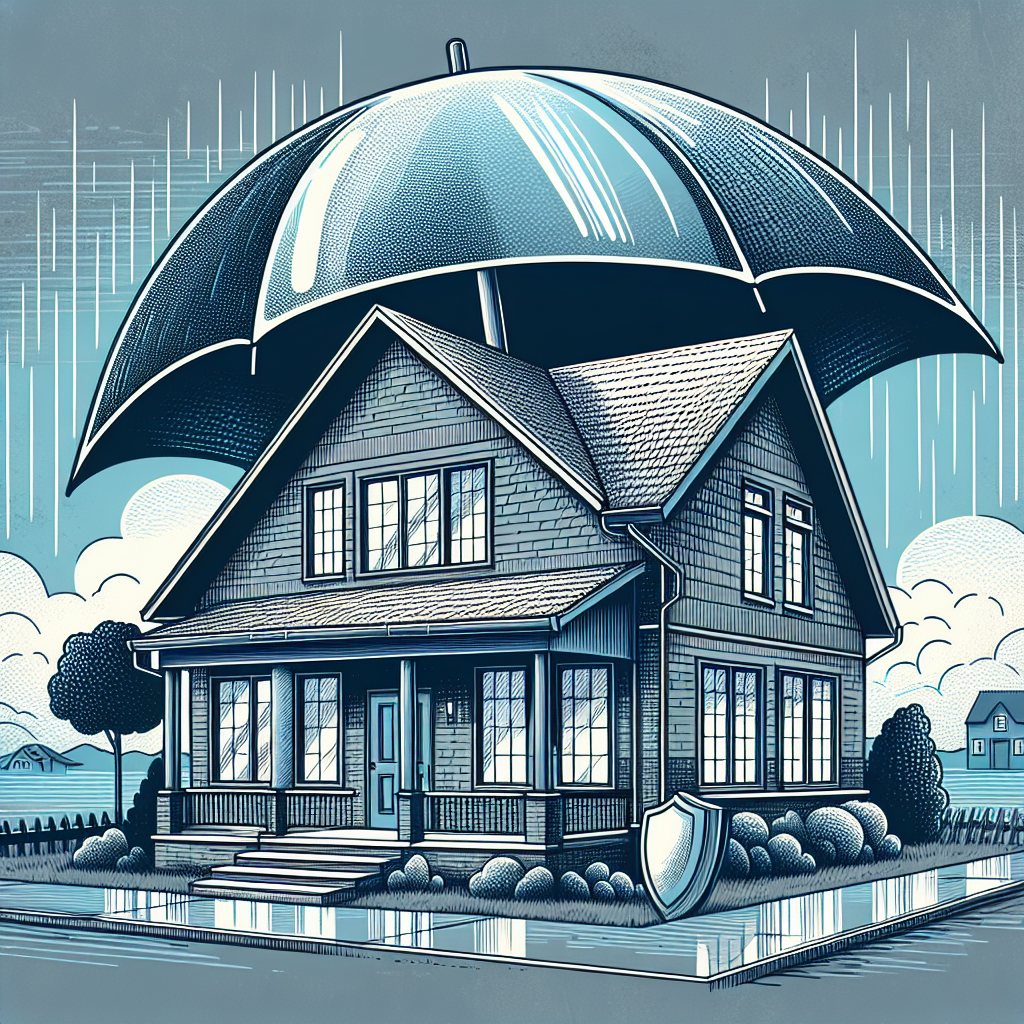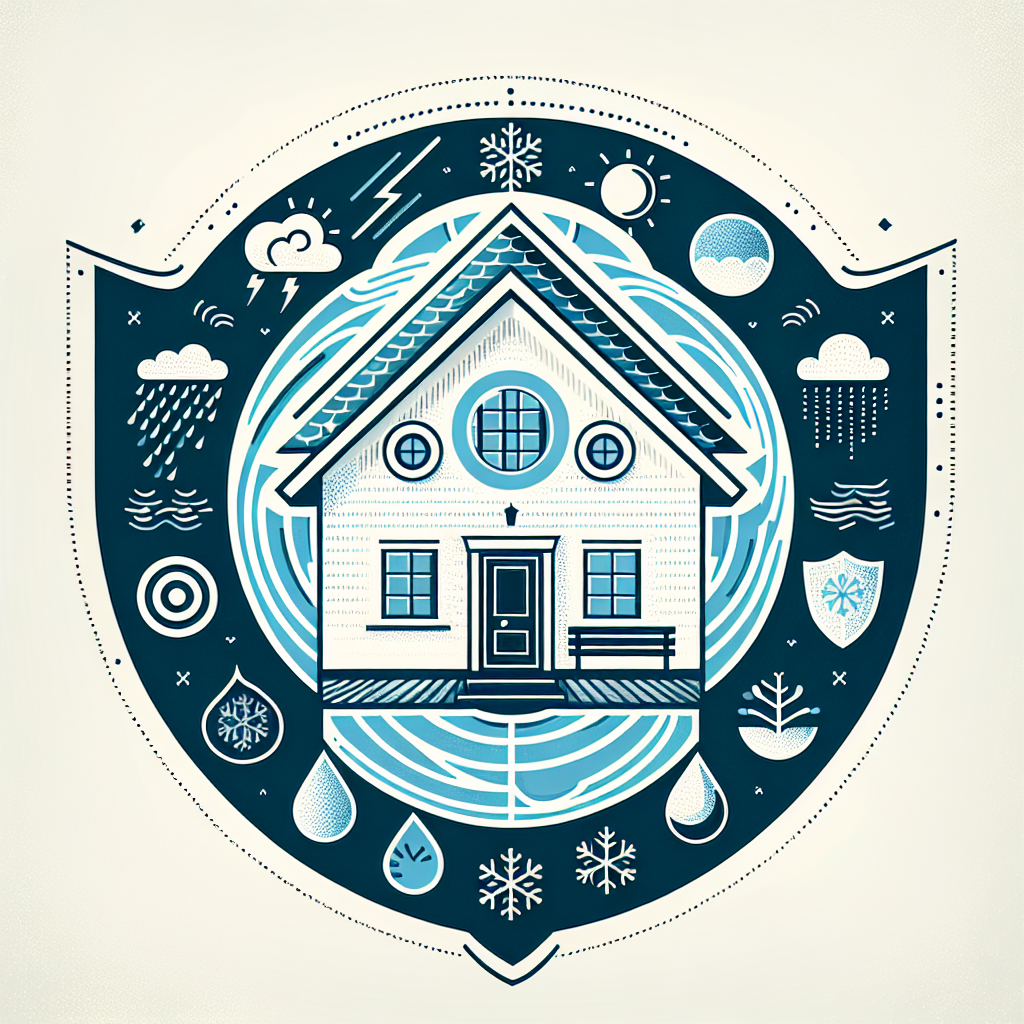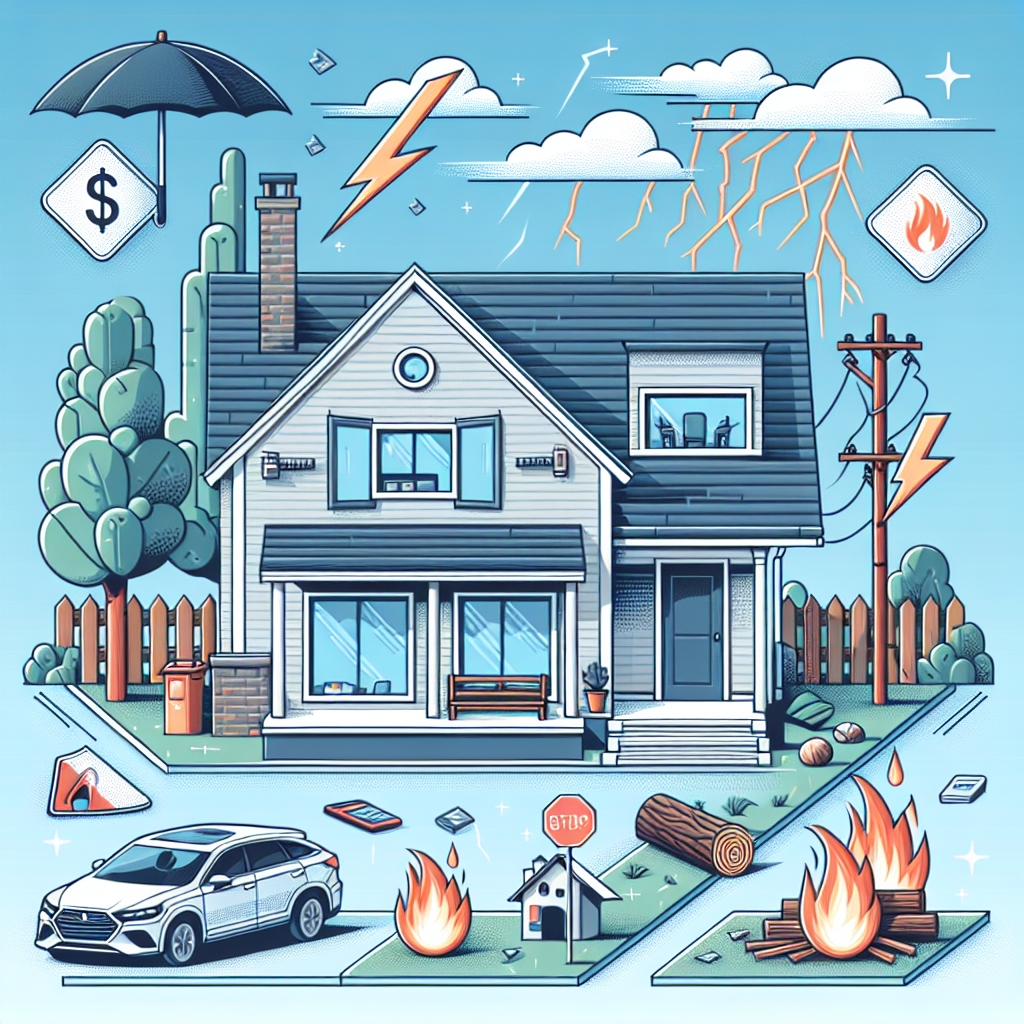Filed under Home Insurance on
State Farm Home Insurance Roof Coverage Guide

If a storm has ever rattled your windows or a mystery stain has crept across your ceiling, you know how fast a small roof issue can become a big home problem. Understanding what your policy covers before you need it can make all the difference. This State Farm Home Insurance Roof Coverage Guide breaks down how roof coverage typically works, what to expect during a claim, and the steps you can take to protect your home and your budget.
How roof coverage generally works
For most homeowners policies, your roof is part of the dwelling coverage, which protects the structure of your home against covered perils. Coverage is designed for sudden and accidental damage, not gradual wear. Think wind, hail, falling trees, or fire rather than age, neglect, or routine deterioration.
Key concepts to know:
- Covered perils: Common examples include wind, hail, lightning, fire, falling objects, and sometimes the weight of ice and snow. Flood and earthquake are typically excluded unless you carry separate policies.
- Exclusions: Wear and tear, rot, mold, mechanical breakdown, and faulty workmanship are usually not covered. If a roof leaks because it reached the end of its life, that’s maintenance, not insurance.
- Policy form: Many homeowners carry an HO-3 or HO-5 policy. Coverage details can vary by state and by endorsement, so your declarations page and policy jacket are essential reading.
- Materials: Asphalt shingles, metal, tile, and slate are all insurable, but reimbursement rules may differ depending on age, condition, and endorsements.
Replacement cost vs. actual cash value
How your roof is paid after a covered loss depends on whether your policy provides replacement cost value (RCV) or actual cash value (ACV) for the roof:
- Replacement cost value: Pays the cost to repair or replace the roof with similar materials and quality, without subtracting for depreciation, up to policy limits. Often paid in two checks: the initial ACV portion, followed by recoverable depreciation after repairs are completed and documented.
- Actual cash value: Pays the depreciated value of the roof at the time of loss. Older roofs or policies with a roof-specific endorsement may default to ACV.
Industry trend watch: In recent years, more insurers have introduced roof surface payment schedules or ACV endorsements in hail-prone or high-loss states. These endorsements may limit what you receive for older roofs, especially on certain materials. Read your declarations page to see if roof coverage has special terms or a separate deductible.
Deductibles you might see
Deductibles are your share of the claim cost. Roof-related losses sometimes trigger special deductibles, particularly for wind or hail. You might encounter:
- All-perils deductible: A flat dollar amount that applies to most claims.
- Wind/hail deductible: May be a separate, higher deductible expressed as a percent of Coverage A (the dwelling limit), often ranging from 1% to 5% depending on location and risk.
- Named storm or hurricane deductible: Common in coastal regions, triggered by specific weather events as defined in the policy.
Example scenario: If your home is insured for $350,000 and you have a 2% wind/hail deductible, your out-of-pocket for a hail claim could start at $7,000 before insurance pays, subject to coverage terms and limits.
How State Farm typically structures roof claims
While every claim depends on the policy and facts of the loss, the process usually follows a recognizable pattern:
- Report the damage promptly. Insurers generally encourage quick reporting after storms or when active leaks are discovered.
- Document everything. Take time-stamped photos and videos from multiple angles, inside and out. Note the date of the storm and any emergency repairs.
- Prevent further damage. Tarp the roof or hire a professional for temporary repairs. Keep receipts; reasonable mitigation costs are often covered.
- Inspection. An adjuster may visit or use virtual tools, aerial imaging, or contractor estimates to evaluate damage. Large events sometimes involve dedicated catastrophe teams.
- Estimate and scope. You’ll receive a detailed estimate that outlines materials, measurements, and line-item costs. Ask questions if anything is unclear.
- Payment. If the policy is RCV, you may receive an initial ACV payment, with recoverable depreciation released after proof of completion. If ACV applies, the payout reflects depreciation.
- Repairs and closeout. Choose a reputable contractor, complete the work to code, submit final invoices, and request any remaining depreciation.
Depreciation and recoverable depreciation
Depreciation is the reduction in payment for age and condition. Under RCV coverage, depreciation may be recoverable once you complete repairs. Under ACV-only coverage, depreciation is not typically recoverable. The estimate usually shows the replacement cost, less depreciation, less the deductible, to calculate the initial payment.
Matching and partial damage
If only part of the roof is damaged, the insurer may pay to repair or replace only that portion. Some policies or endorsements address matching when materials are discontinued. Matching rules vary by state and policy language. If matching is important to you, ask how your policy treats it.
Roof age and material considerations
Roofs are not all alike. Age, material, and prior maintenance all factor into coverage and cost. Consider the following:
- Asphalt shingles: Most common in the U.S., with lifespans typically 15–30 years depending on quality and climate. Many hail claims involve asphalt. Impact-resistant shingles (UL 2218 Class 3 or 4) may reduce damage and sometimes earn discounts.
- Metal roofing: Durable and often wind-resistant. Some policies exclude purely cosmetic damage to metal from hail if performance is not impacted, while functional damage remains covered. Check your policy.
- Tile and slate: High-end materials with long lifespans. Replacement can be costly, and availability of matching tiles may be limited.
- Flat or low-slope roofs: More prone to pooling water and seam failures; maintenance and proper drainage are critical to avoid denial for wear or neglect.
Endorsements can change how these materials are paid. In some regions, roof surface payment schedules reduce payouts for older surfaces regardless of the material. This State Farm Home Insurance Roof Coverage Guide encourages homeowners to confirm whether any schedule applies and how it is calculated.
What is typically not covered
Home policies are not warranties. Expect exclusions for:
- Wear and tear, deterioration, and defects in construction or installation
- Mold, rot, and long-term seepage that occurs over weeks or months
- Animal or pest damage unless specifically endorsed
- Cosmetic-only damage to certain roof types when performance is unaffected (varies by policy)
- Faulty workmanship for new installs or repairs; contractor warranties apply instead
If a covered peril (like hail) causes a breach that leads to interior water damage, the ensuing interior damage is often covered even if long-term roof wear is not. The cause matters.
Ordinance or law and code upgrades
Building codes evolve. If your roof must be brought up to current code during repairs, someone has to pay for the upgrade. Ordinance or law coverage helps with the increased cost to comply with codes after a covered loss. Limits vary, often 10% to 50% of Coverage A, and you can usually buy more. Homeowners in areas with frequent code changes, like hurricane or wildfire zones, should review these limits carefully.
Solar panels, skylights, and accessories
Modern roofs often include more than shingles. Coverage generally extends to permanently attached solar panels, skylights, vents, and gutters if a covered peril causes damage. However, separate deductibles or valuation rules may apply. If you have a leased solar system, you may need to coordinate with the leasing company. Keep installation documents and component lists; they simplify claims and valuation.
Regional risks and industry trends
Claims patterns differ by geography, and insurers adjust coverage accordingly:
- Hail belt states: Increased frequency and intensity of hail events have driven more wind/hail deductibles and roof payment schedules.
- Hurricane-prone coasts: Named storm or hurricane deductibles, stricter roof attachment requirements, and incentives for fortified construction are common.
- Wildfire-prone regions: Roofing materials rated for fire resistance and ember protection can influence both risk and pricing.
Research from industry organizations has highlighted the value of mitigation: impact-rated shingles, sealed roof decks, and fortified standards can significantly reduce claim severity. This State Farm Home Insurance Roof Coverage Guide recommends asking your agent about discounts for impact-resistant materials or fortified roofs if available in your state.
How to prepare before a storm
Preparation lowers risk and speeds up claims:
- Annual roof check: Inspect for curling shingles, missing flashing, nail pops, cracked boots, clogged gutters, and moss or debris. Hire a pro for steep or complex roofs.
- Tree maintenance: Trim branches away from the roof and remove dead limbs that could become projectiles.
- Keep records: Save invoices for roof installs, prior repairs, and materials used. Photograph your roof annually and after major weather events.
- Upgrade smartly: Consider Class 4 impact-resistant shingles, enhanced underlayment, and better ventilation. Ask about potential premium discounts.
- Emergency kit: Tarp, ladder safety equipment, and contractor contact information can make a big difference in the first 24–48 hours after a storm.
Filing a strong roof claim
When damage occurs, details help validate and expedite your claim. Use this quick sequence:
- Document the storm date and time, along with local weather reports or photos of hail accumulation if available.
- Photograph damage from multiple angles, including ground-level views, drone images if safe and legal, and interior ceiling stains.
- Prevent further damage by tarping or boarding exposed areas. Retain receipts.
- Collect contractor estimates that specify measurements, materials, and line-item costs. Avoid vague lump-sum quotes.
- Share prior roof paperwork: age, brand, warranty, and any permits or inspections.
- Communicate clearly with your adjuster and ask for a written scope of loss. Clarify whether valuation is RCV or ACV and whether depreciation is recoverable.
Avoiding common pitfalls
Roof claims draw a lot of contractors into a neighborhood after storms. Be discerning:
- Beware of pressure tactics. A reputable contractor will provide a written estimate without requiring you to sign a contingency agreement on the spot.
- Understand assignments of benefits or direction-to-pay forms. These can transfer claim rights; know what you are signing.
- Insurance impersonation is illegal. Contractors should not “act as your adjuster” unless they are licensed public adjusters where permitted.
- Don’t file claims for maintenance issues. Too many small or non-covered claims can affect your premiums and insurability.
- Check licensing, insurance, references, and local reviews. Require permits as needed and insist on detailed scopes and warranties.
Cost drivers you can influence
Even though weather is beyond your control, these factors can stabilize your insurance costs over time:
- Material choice: Impact-resistant shingles or metal roofing can reduce damage in hail and wind. Ask about premium credits for UL 2218 Class 4 materials if available.
- Roof geometry and installation: Hip roofs, proper nailing patterns, and sealed decks perform better in high winds.
- Maintenance discipline: Clean gutters, fix flashing early, and replace worn seals to prevent small issues from becoming big losses.
- Higher deductibles: Choosing a larger wind/hail deductible can lower premiums, but make sure the savings justify the risk. Keep adequate emergency funds.
- Bundle and discounts: Security systems, loss-free credits, and home-auto bundling may help offset rising weather-related costs.
Policy features to review with your agent
Before the next storm season, schedule a policy checkup. Bring this list:
- Roof valuation method: RCV vs. ACV, and whether a roof surface payment schedule applies to your materials and roof age.
- Deductibles: Confirm all-peril and wind/hail or hurricane deductibles, including percentage structures and triggers.
- Matching: How does your policy treat partial damage and discontinued materials?
- Ordinance or law: What is your limit? Would code upgrades be adequately funded?
- Cosmetic damage language: Are cosmetic-only hail dents on metal excluded?
- Impact-resistant roof discounts: Are credits available for Class 4 shingles or fortified upgrades?
- Solar and accessories: Any special terms for panels, inverters, skylights, or gutters?
- Water backup: Consider adding this endorsement; roof claims sometimes reveal other vulnerabilities.
What adjusters look for on roof inspections
Understanding the inspection lens helps you prepare:
- Causation: Is the damage consistent with a recent covered peril, or is it long-term wear?
- Collateral indicators: Dents on soft metals, gutters, and window screens can corroborate hail intensity and direction.
- Quantity and distribution: Hail hits per square, wind-lift patterns, and broken seals help determine repair vs. full replacement.
- Age and condition: Brittle shingles and granular loss suggest depreciation and may influence repairability.
- Code requirements: Are drip edges, underlayment, or ice barriers required for your jurisdiction?
Frequently asked questions
If my roof leaks but I don’t see storm damage, is it covered?
Coverage depends on the cause. Sudden damage from a covered peril is typically eligible. Long-term seepage, worn flashing, or aged shingles generally are not. An inspection helps determine causation.
Do older roofs get less coverage?
Possibly. Some policies apply ACV to older roofs or use payment schedules. If you rely on full replacement cost, confirm your roof’s valuation method and whether age thresholds apply.
Can I choose my own contractor?
Yes, homeowners usually select their contractor. Insurers may offer preferred vendors, but the choice is yours. Focus on licensing, experience, and clear scopes. The insurer pays according to policy terms, not necessarily any price.
What if only part of my roof is damaged?
The insurer typically pays to repair the damaged portion. Matching or full replacement may depend on policy language, availability of materials, and state regulations.
Will my rates go up after a storm claim?
Premiums are influenced by many factors, including overall claim activity in your area and your individual claim history. Catastrophic weather can raise regional rates even for claim-free customers.
Are solar panels covered?
When permanently attached and damaged by a covered peril, they are generally included as part of the dwelling. Check for any special deductibles, valuation terms, or separate property agreements with a leasing company.
What is recoverable depreciation?
Under RCV coverage, the insurer may initially pay ACV. Once repairs are completed and documented, the withheld depreciation is released, up to the total replacement cost allowed by the estimate and policy limits.
How fast should I file a claim?
Prompt notice is best. Some policies have time limits to report claims or to complete repairs for recoverable depreciation. The sooner you engage, the easier it is to document causation and mitigate further damage.
Realistic claim timelines
Minor wind damage can be scoped and paid quickly, sometimes within days. Large hail or hurricane events stretch timelines as adjusters, materials, and contractors are in high demand. Ordering specialty shingles or tile can add weeks. Build contingencies into your schedule and maintain frequent communication with your adjuster and contractor.
Documentation checklist to keep on hand
- Proof of roof age: installation invoice, warranty, or permit
- Annual and post-storm photos or drone imagery
- Contractor bids with measurements and material specs
- Receipts for emergency mitigation
- Correspondence with your adjuster and any code officials
- Copies of the estimate and any supplements requested by your contractor
How supplements and change orders work
Once work begins, your contractor might find hidden damage, sheathing issues, or code-required items not in the original scope. They can request a supplement by submitting photos, code citations, and updated line items. Insurers typically review and approve legitimate, well-documented supplements. Always get change orders in writing before work proceeds.
The role of mitigation and resilience
Resilience is paying dividends. Independent research groups have shown that fortified roofs, impact-rated materials, and sealed roof decks can significantly reduce losses. Beyond insurance savings, these upgrades deliver real-world protection, fewer disruptions, and better long-term value. This State Farm Home Insurance Roof Coverage Guide encourages homeowners to treat mitigation as a multi-year plan: tackle ventilation and flashing now, upgrade shingles next replacement cycle, and consider fortified standards where available.
When to consider a roof replacement outside of a claim
If your roof is at or beyond its intended life, replacing it proactively can prevent interior water damage, mold, and electrical risks. It can also position you to secure replacement cost coverage on a newer roof and potentially earn discounts for impact-resistant materials. Keep the invoice, permit number, and brand details for future underwriting.
Key takeaways
- Know your valuation method. RCV vs. ACV, and any roof payment schedules, are the biggest drivers of claim outcomes.
- Deductibles matter. Wind/hail and hurricane deductibles can be percentage-based and sizable.
- Documentation wins. Photos, receipts, and detailed estimates speed approvals and maximize accuracy.
- Mitigation saves money. Impact-resistant materials, improved installation, and regular maintenance lower risk.
- Ask precise questions. Matching, ordinance or law, and cosmetic damage exclusions vary by policy and state.
Questions to ask your agent today
- Is my roof covered on a replacement cost or actual cash value basis?
- Do I have a separate wind/hail or hurricane deductible? How is it calculated?
- Does my policy include a roof surface payment schedule or cosmetic damage exclusion?
- What are my ordinance or law limits? Are they enough for current local codes?
- Do I qualify for discounts if I install Class 4 shingles or meet fortified standards?
- How does my policy handle matching if identical materials are no longer available?
- Are solar panels and skylights included with the same valuation and deductible?
Bringing it all together
Roof claims can be stressful, but they do not have to be confusing. Start by confirming your roof’s valuation method and deductibles, keep thorough documentation, and choose reputable professionals. With the right preparation, you can navigate the process confidently and restore your home quickly after a storm.
Use this State Farm Home Insurance Roof Coverage Guide as a reference before you need it. Revisit it after severe weather, share it with family members who help with home maintenance, and bring it to your next policy review. By understanding the levers that affect coverage—valuation, deductibles, endorsements, and mitigation—you’ll make better decisions when minutes matter.
Finally, remember that policies evolve. Local regulations, building codes, and industry trends shift over time. Re-reading this State Farm Home Insurance Roof Coverage Guide alongside your current policy documents once a year is a simple habit that can prevent costly surprises.
If you only do three things this week, do these: photograph your roof, confirm your deductibles and valuation in your declarations, and ask about impact-resistant upgrades. The next storm will come; the best time to prepare is before the clouds roll in. With this State Farm Home Insurance Roof Coverage Guide at your side, you can protect your roof, your wallet, and your peace of mind.





